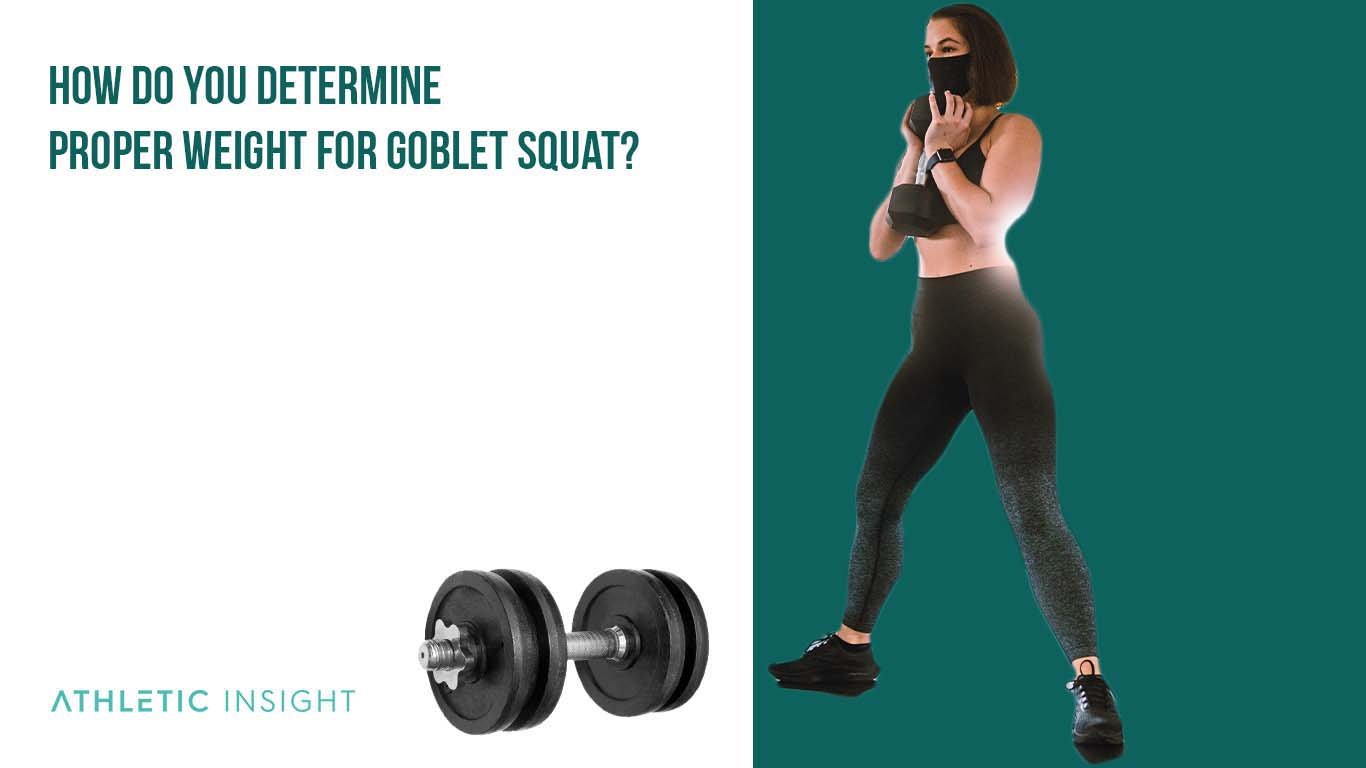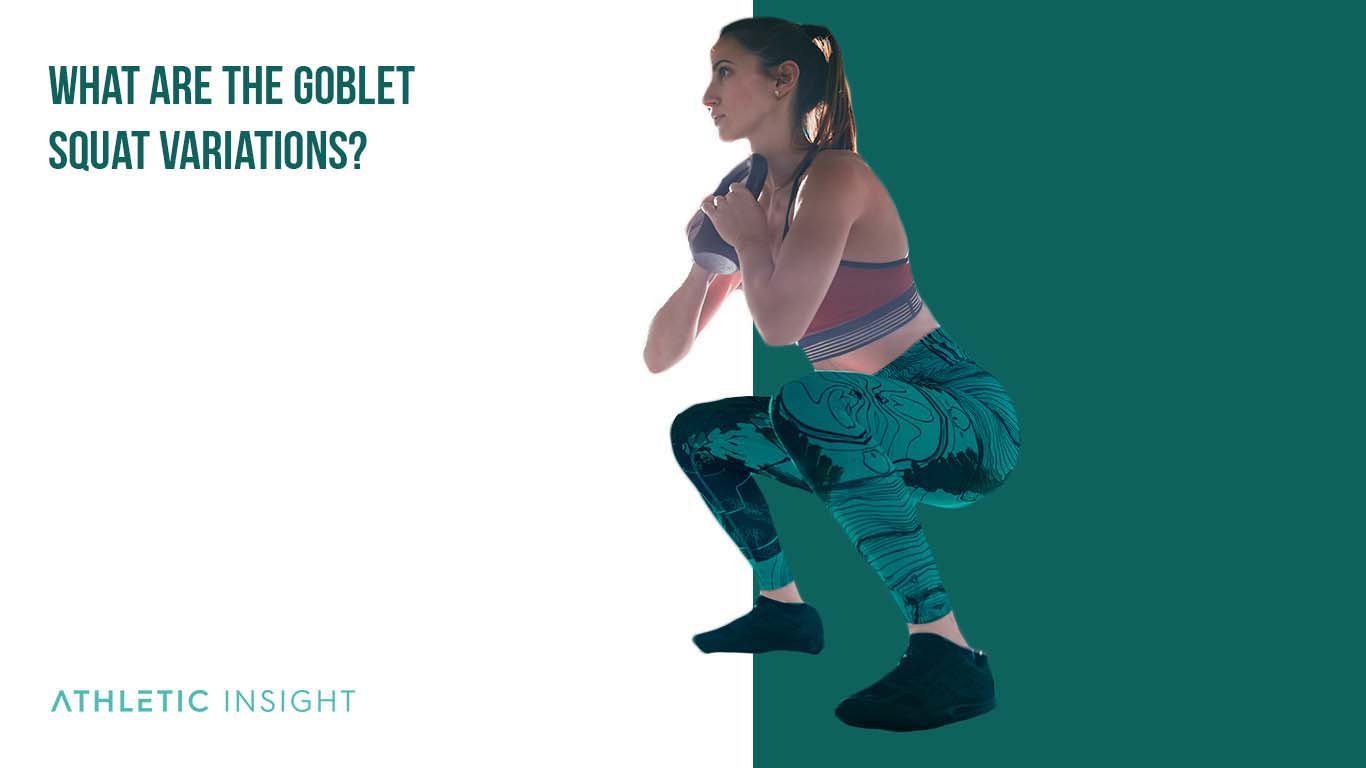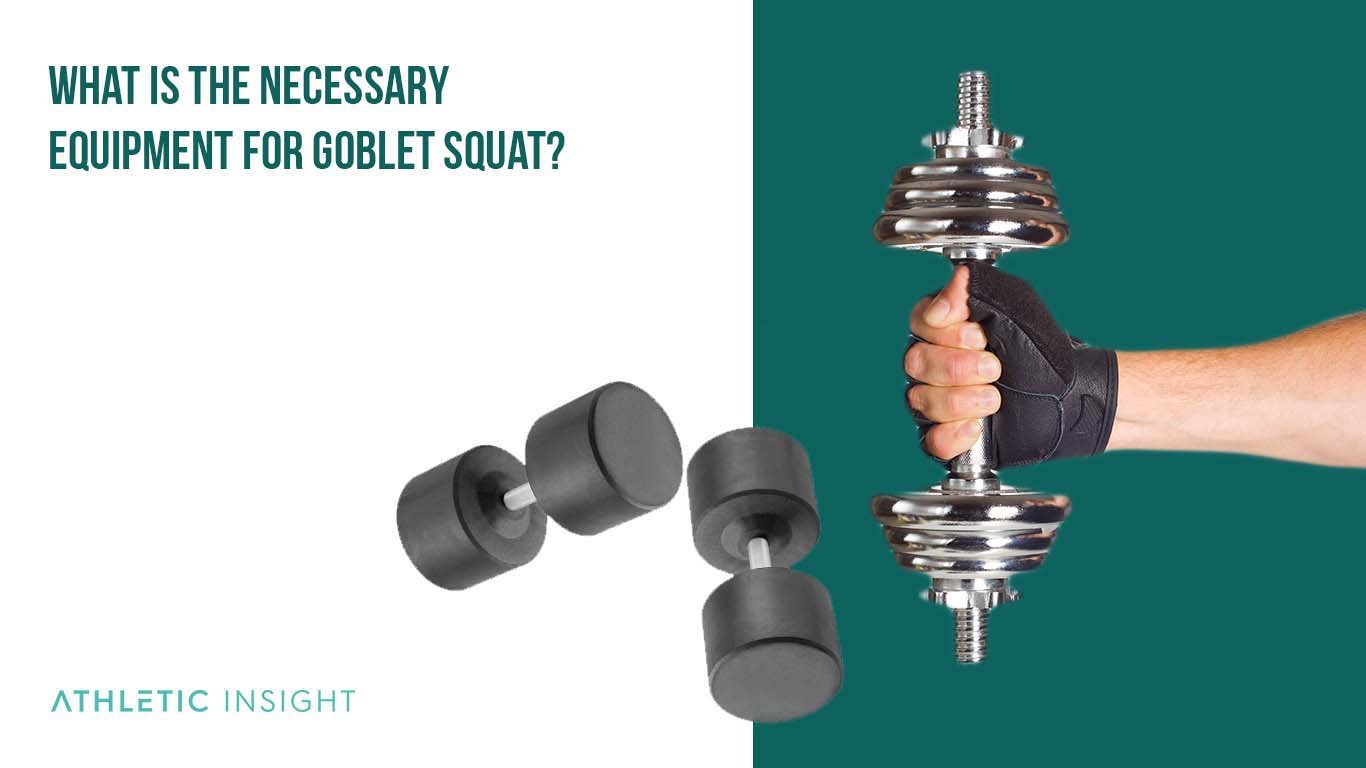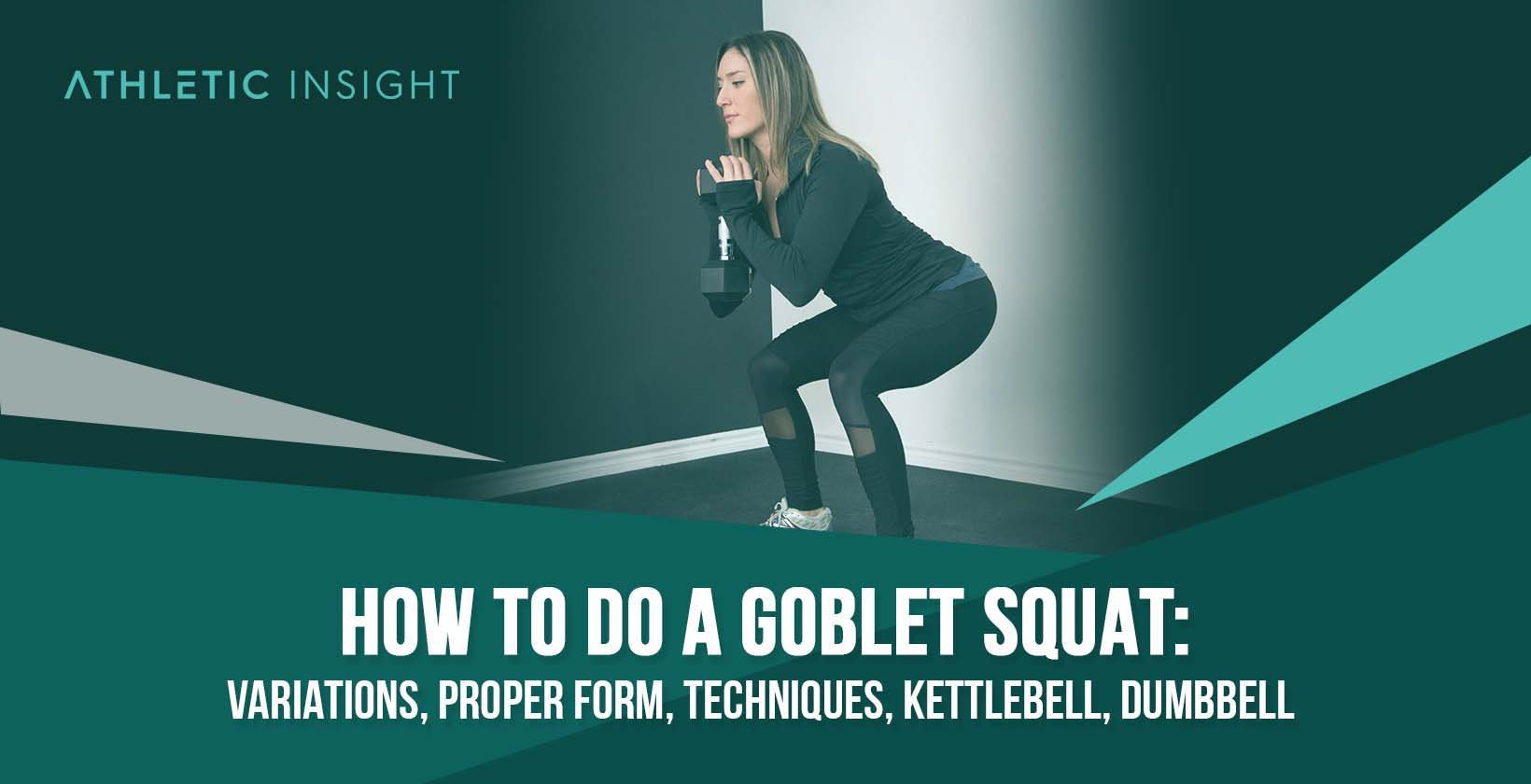Goblet squats are a variation of squatting that adds weights to standard squatting. Goblet squats are performed by spreading your legs past the width of your shoulders, holding a kettlebell or dumbbell to your chest, and bending your knees into a squatting position and back up, keeping the weight to your chest the whole time.
Goblet squats are not only good as a lower body exercise but also engage your core and arms, making them more of a full-body workout than standard squats.
Goblet squats engage all muscles in your lower body, including your glutes, quadriceps, calves, and hamstrings. They also require the use of your core, spinus Erectus, forearms, upper back, and shoulders.
Using the proper goblet squat technique, you should be able to safely and efficiently engage your entire body. These squats work more than just your mirror muscles and engage much of your stabilizer muscles as well.
Proper goblet squat technique requires you to keep your core engaged throughout the exercise and your body erect, which will help remind you to maintain proper technique when doing other types of squats.
There are several variations of goblet squats that will be discussed in more detail later in this article, but all variations require weight and proper technique. Improper technique can inadvertently cause damage to your body. Most commonly, people use either kettlebells or dumbbells when doing goblet squats.
Kettlebells are weights with a large base and a single handle that you can grab from either side while performing goblet squats. Dumbbells have the weight evenly distributed on either end of a small bar and can be held vertically when squatting. Both types of weights help improve grip strength.
This article will discuss some common mistakes that people make when performing goblet squats and potential injuries that arise as a result of these mistakes. Proper form is essential when performing the exercise to ensure safety and efficacy.
How to Perform Goblet Squat with Proper Form?
Proper form is crucial to getting the most out of any exercise because it prevents injury by ensuring that strain is not placed on parts of the body that it shouldn’t be. It also increases the effectiveness of workout routines by ensuring that your muscles are strengthened over time through consistent training.
To dominate goblet squats, make sure that you follow these directions exactly to get the best leg exercises results and prevent any injury or strain.
- Stand with feet wider than hip-width apart.
- Keep toes pointing outward.
- Hold a kettlebell with both hands at your chest on either side of the handles.
- Bend your elbows to place the goblet in your chest.
- Warm up with a lighter (or no) kettlebell to get a feel for it.
- Increase the weight for Full Set.
- Keep your core engaged and
- Gaze straight ahead throughout the squat.
- Squat by pushing your hips back and bending your knees.
- Inhale as you descend.
- Keep your chest tall as you drop your hips.
- Do not squat on your toes.
- Keep elbows inside of either knee at the bottom of the goblet squat.
- Reverse the action to return to the starting position.
- Take a deep breath as you rise.
- Press your hips forward to properly engage your glutes.
- Finish the set and rack the kettlebell.
- Repeat for as many sets as you like.
This guide is designed for a standard goblet squat using a kettlebell. Feel free to swap out a kettlebell with a dumbbell if you prefer.
What Are the Benefits of Goblet Squats?
Goblet squat benefits offer various benefits to your overall body and health.
- Improves Squat Form
- Proper Knee Alignment When It Comes to Squatting
- Improves Quadriceps
- It’s a Total Body Exercise
- Improves Lower Body Strength
- Improves Spine
1. Improves Squat Form
Goblet squats help improve your squat form across all variations of squatting. People often begin leaning forward with standard squats without realizing they’re doing it.
The presence of the weight in front of your chest when performing a goblet squat encourages you to keep your torso straight and your back aligned. By practicing proper form while performing goblet squats, you can better adjust your form with all squatting.
2. Proper Knee Alignment When It Comes to Squatting
Knee alignment can be improved by squatting, but it is often hindered instead without proper form. Allowing your knees to bend inward when squatting is known as “knee valgus” and can cause unnecessary strain on knee joints.
Goblet squats help encourage proper knee alignment when squatting due to the elbow placement at the bottom of the squat. Because you’re holding a weight, your elbows line up with your knees when you reach the bottom of your squat and prevent your knees from bending inward.
3. Improves Quadriceps
Standard goblet squats work various muscle groups in your lower body. Still, by using an elevated goblet squat variation, you can focus extra attention on your quadriceps, which can sometimes be challenging to isolate.
Try placing two weights on the ground and placing your heels on them. By doing this, you angle your heels slightly upwards and narrow your leg positioning somewhat. Changing this angle forces your knees over your toes at the bottom of your squats, meaning you require the use of your quads more to extend upwards again,
4. It’s a Total Body Exercise
Goblet squats target more than just your lower body; like standard squats, nearly all muscles in your legs and glutes are activated when performing goblet squats, but your upper body is also engaged.
Because you’re holding a weight in front of your chest, goblet squats work out your arms, back, and core as well, making it a total body exercise.
5. Improves Lower Body Strength
While goblet squats are a great full-body exercise, they can also help strengthen your lower body to get the maximum benefit of strength training and work on slowing down your movements. The slow and steady movement will ensure that your target muscle groups are engaged.
You can also increase strength by using heavier weights over time; fewer reps of heavier weights will help with strength over cardio.
6. Improves Spine
The use of the weight in goblet squats discourages you from leaning forward. Your spine is appropriately aligned above your hips, preventing you from inadvertently injuring your back while squatting improperly.
Furthermore, this movement strengthens the alignment of your spine and works out your spinus erectus muscles.
What Are the Mistakes for Goblet Squat Form?
While a good goblet squat form is easier for you to achieve than some other types of squats, people still make several common goblet squat mistakes when attempting them.
- Knee valgus occurs when you bend your knees inward while squatting
- Improper weight distribution occurs when you lean forward or position yourself so that you’re placing more weight on one section of your feet.
- If you hold the weight far from your body, you will detract from getting the lower body exercise you’re looking for because your arms will be working harder than necessary
- Leaning forward will cause strain on your back and decrease the effectiveness of the exercise. Make sure to keep your spine straight and shoulders back.
- If you choose a weight that is too heavy, you may not reach full extension on your way down. Make sure to choose a weight that will help you build strength without preventing you from reaching your entire range of motion.
How Do You Determine Proper Weight For Goblet Squat?
Determining the appropriate weight to use when performing goblet squats is up to you and what feels comfortable. If you have no idea what weight you should be using, consider starting with a five or ten-pound weight and increasing in increments of five.

It is always good to warm up your muscles by doing a few reps with a lower weight kettlebell or dumbbell and then increasing the weight for the remainder of your reps.
You want to make sure that you are slowly increasing the weight over time to build strength, but don’t mistake choosing a weight that is so heavy it negatively impacts your range of motion.
Which Muscles Are Involved while Performing Goblet Squats?
Goblet squats are known as a total body workout, meaning your entire body is needed to perform this exercise. But some main muscles are targeted when performing goblet squats.
- Your quadriceps are one of the primary muscles that benefit from goblet squats. These muscles stabilize and flex your knees, which get a lot of movement when performing squats.
- Your glutes work to extend your hips up and down when performing the squatting movement
- Your core and arm muscles are activated primarily by holding the weight. You need your core to hold your back upright and your arms to hold the weight close to your chest.
- The muscles in your upper back are activated during goblet squats to keep the weight close to your chest. You have to pull your shoulders back, causing resistance.
What Are the Goblet Squat Challenges?
Several goblet squat challenges are designed to increase strength and test your body’s ability to perform complex tasks.
- 25 Goblet squats with 50% body weight: This challenge is a relative strength test, and to pass it, you must be able to complete 25 goblet squats holding the equivalent of half of your body weight; so if you weigh 250 pounds, you’ll squat with 125 pounds.
- 65-pound goblet squat challenge: This challenge is intended to test your strength and mobility. To complete this challenge, you have to sink to the bottom of the squat and hold this position for 15 seconds. Complete as many reps as you’re able to.
- 21-day goblet squat challenge: This challenge is intended to quickly improve your strength by increasing the overall weight and reps you’re able to use over three weeks. Week 1: Start the week doing 20 reps with your starting weight, increasing by five reps each day for seven days. Week 2: Start the week doing 20 reps with your medium weight, increasing by five reps each day for seven days. Week 3: Start the week doing 20 reps with your final weight, increasing by five reps each day for seven days.
What Are the Goblet Squat Variations?
Goblet squat variations are minor changes to standard goblet squat methodology designed to target specific muscles and strengthen particular areas of your body.

Each variation is tweaked in one specific way that adds an extra challenge to your goblet squats.
- Goblet Split Squat is achieved when you lift one leg behind you and is intended to target only one leg at a time
- Sumo Goblet Squat occurs when you stand with your legs open wide, targeting your groin and inner thighs
- Heel Elevated Goblet Squat occurs when you place weights under your heels, tipping your toes forward, which targets your quads
- Goblet Squat With Plate is a standard goblet squat using a weight plate
- Kettlebell Goblet Squat is a standard goblet squat using a kettlebell
- Banded Goblet Squat is a standard goblet squat using a resistance band
- Landmine Goblet Squat is a standard goblet squat using a landmine, which is a piece of equipment comprised of a barbell secured to the floor
What is the Necessary Equipment for Goblet Squat?
Necessary equipment for goblet squat are as follows.

- Kettlebells are standard weights used for goblet squats
- Dumbbells are standard weights used for goblet squats
- Goblet squat variations may call for other pieces of equipment such as landmines, weight plates, or resistance bands
What Is the Origin of the Goblet Squat?
The goblet squat was invented by a coach looking for a way to teach people the appropriate method of squatting. He invented the goblet squat because it discourages people from leaning forward while encouraging them to keep their back straight, shoulders back, and have a full range of motion.
Who Named the Goblet Squat?
The goblet squat was created by a coach named Dan John. He chose this name because when you’re holding the weight in front of you, it looks as though you’re holding a goblet.
Goblet squats gained widespread popularity around 2010, in large part due to Dan John’s respect within the lifting and coaching community.
What Are Some Goblet Squat Related Facts?
Goblet squats affect more than just your muscle mass and mobility; they can affect your hormone levels and mood. Below are some of how doing goblet squats can positively impact your hormone levels.
Do Goblet Squats Affect Hormones?
Goblet squats positively affect your hormone levels through the release of endorphins. These endorphins improve your mood and cause relative feelings of happiness. Additionally, goblet squats increase testosterone levels and human growth hormone (HGH).
The release of these hormones occurs in response to high-intensity workouts in which your muscles essentially “break down,” and to build them up again, your body sends signals to your brain to release HGH and testosterone.
Do Goblet Squats Increase Testosterone?
Goblet squats increase testosterone production through this muscular breakdown method. Human growth hormone is needed to rebuild and grow muscle, and increased testosterone levels, which is an anabolic steroid, are essential for HGH release.
Do Goblet Squats Affect Mood?
Goblet squats affect mood through the release of endorphins. Your brain releases endorphins when you exercise, scientifically proven to elevate your mood.
Weight training is proven to positively affect your mood by strengthening your neck and back, directly reducing stress levels.
Are Goblet Squats Part of a Military Movement?
While goblet squats could be used in basic training as a form of strength training, they have no history tied to any military forces and were not created with the military in mind.
Are Goblet Squats Dangerous?
If done correctly, goblet squats should improve your overall health and strength and pose no danger to you.
However, use caution when first starting to ensure that you’re using the proper form. Improper form when squatting could result in strain or injury.



